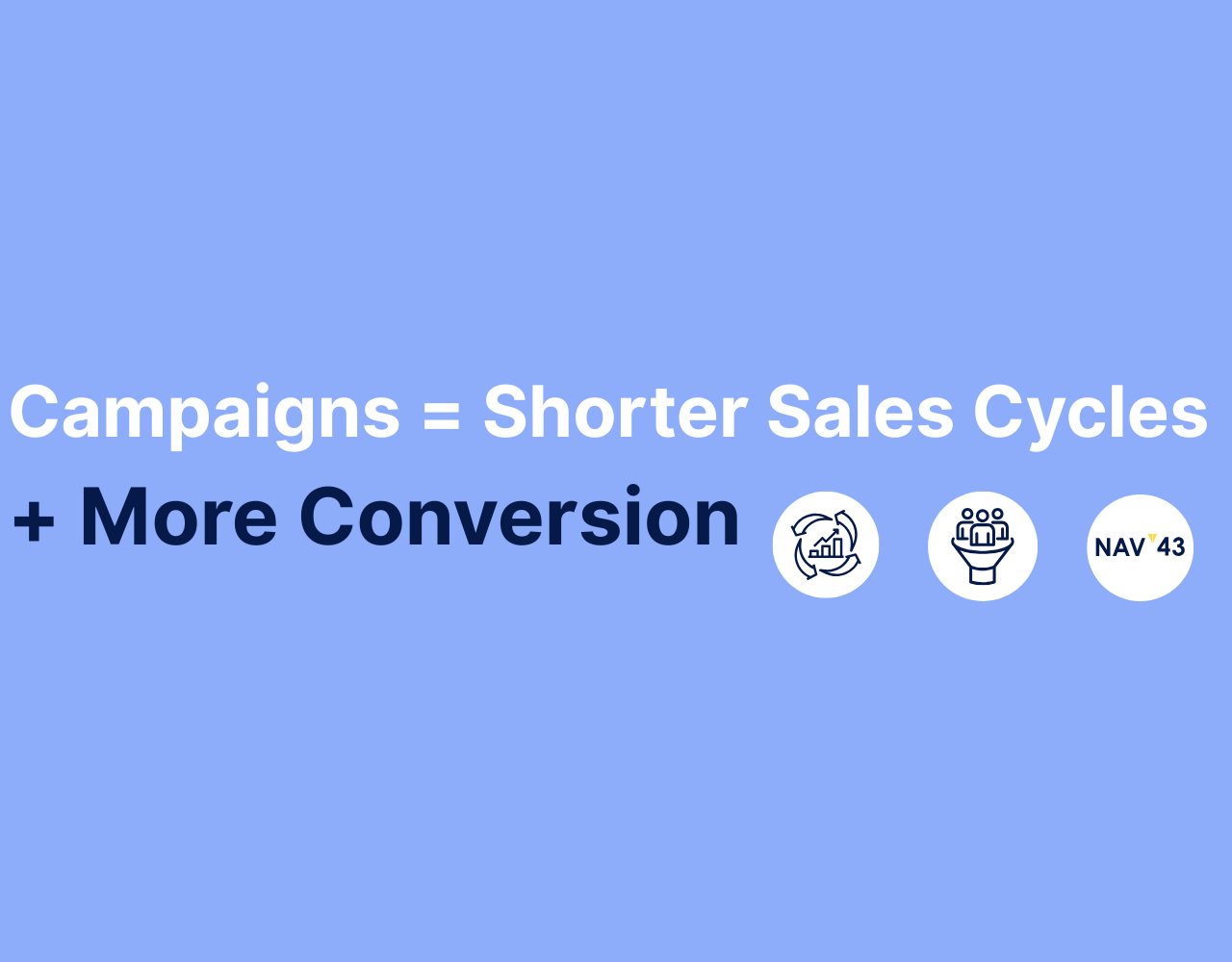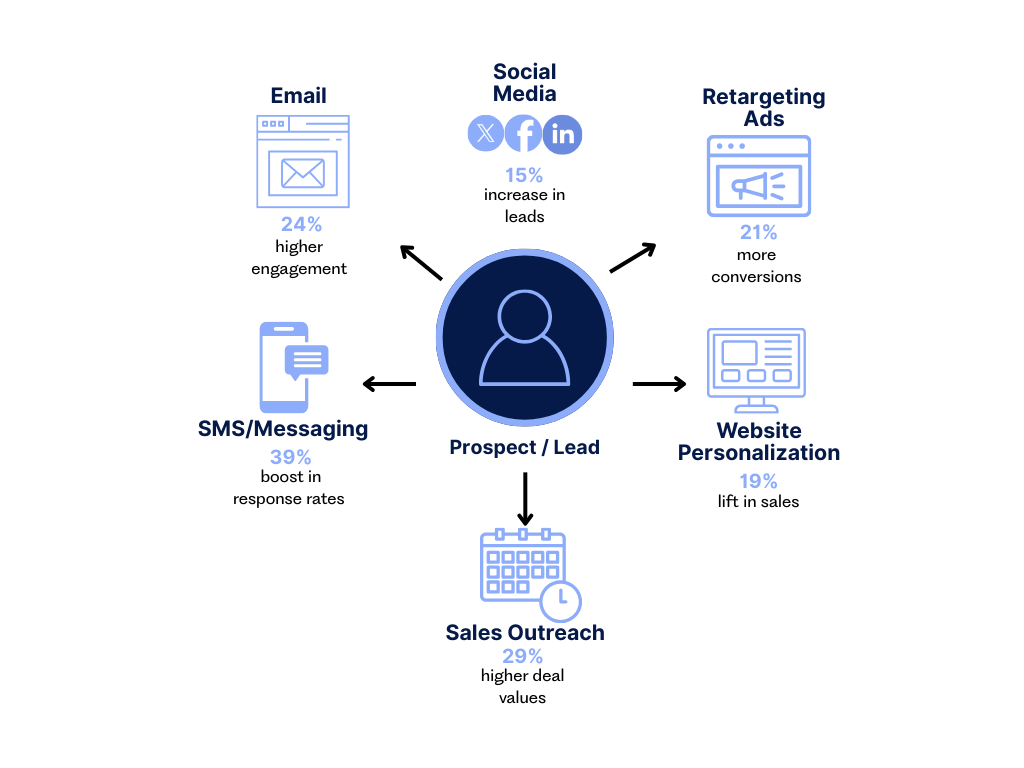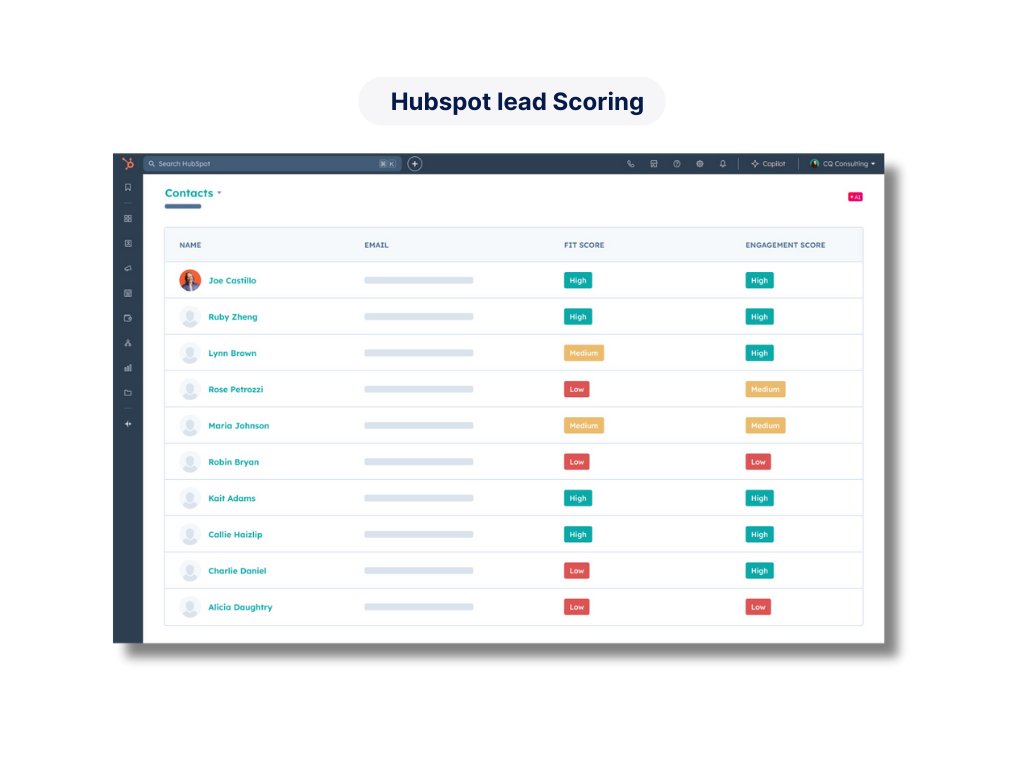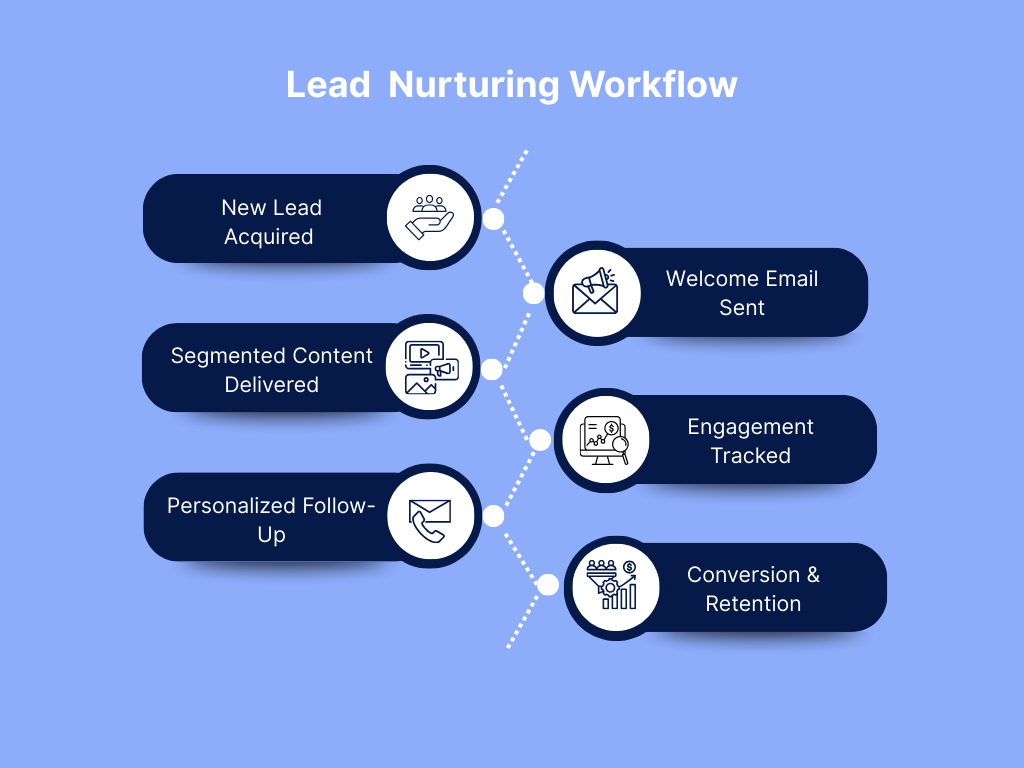
Lead Nurturing Campaign Examples That Drive Real Conversions
Turning prospects into paying customers rarely happens with a single touchpoint. After over a decade of building digital marketing strategies at NAV43, I’ve seen countless businesses struggle with the same challenge: They generate plenty of leads but fail to convert them effectively.
The missing piece? A structured lead nurturing campaign that guides prospects through their buying journey with personalized, value-driven communication.
When we implemented a multi-channel nurturing sequence for a SaaS client last quarter, they saw a 37% increase in qualified sales conversations within just 30 days. The campaign didn’t just improve conversion rates – it shortened their sales cycle by nearly two weeks.
Let me walk you through the lead nurturing campaign examples that consistently deliver results for our clients and practical steps to implement these strategies in your business.
What Is a Lead Nurturing Campaign and Why Does It Matter?
Lead nurturing is the process of developing relationships with buyers at every stage of the sales funnel. Instead of focusing solely on the initial capture or the final conversion, effective nurturing addresses the critical middle ground where most leads either advance toward a purchase or drop off entirely.
The Role of Lead Nurturing in Your Sales Funnel
The traditional sales funnel moves prospects from awareness to consideration to decision. Without proper nurturing, though, this journey becomes fragmented and leaky.
According to research by Forrester, B2B companies with mature lead nurturing programs generate 50% more sales-ready leads at 33% lower cost per lead. This striking difference stems from nurturing’s ability to:
- Maintain consistent communication with prospects who aren’t yet ready to buy
- Provide value through relevant content and solutions, not just sales pitches
- Build credibility and trust before asking for the purchase
- Address specific pain points that might otherwise become purchase barriers
Why Nurturing Leads Improves Conversion Rates
Most leads simply aren’t ready to buy when they first encounter your brand. In fact, according to MarketingSherpa, 79% of marketing leads never convert into sales. Lead nurturing bridges this gap by:
- Educating prospects about problems they may not fully understand
- Positioning your solution as the ideal answer to those problems
- Building trust through consistent, valuable interactions
- Overcoming objections before they become conversion barriers
- Moving leads toward purchase with appropriate calls-to-action
The Impact of Lead Nurturing on Long Sales Cycles
For products or services with longer sales cycles – particularly in B2B – nurturing becomes even more critical. By maintaining engagement during extended consideration phases, you:
- Keep your brand top-of-mind when competitors might be forgotten
- Demonstrate commitment to solving prospective problems
- Provide ongoing value that builds goodwill
- Create multiple opportunities for conversion rather than relying on a single touchpoint
The Key Elements of a Successful Lead Nurturing Campaign
After analyzing hundreds of lead nurturing campaigns across industries, we’ve identified three critical elements that consistently drive results:
Personalization and Segmentation
Generic messaging yields generic results. Effective lead nurturing recognizes that different prospects have different:
- Pain points and challenges
- Industry-specific needs
- Positions in the buying journey
- Decision-making authority
According to Campaign Monitor, segmenting your audience and personalizing your messaging accordingly can increase revenue from your email campaigns by up to 760%.
Multi-channel Outreach (Email, Social Media, SMS)
While email remains the backbone of most nurturing programs, limiting yourself to a single channel severely constrains your reach. Omnichannel nurturing campaigns that coordinate messaging across:
- Email sequences
- Retargeting ads
- Social media engagement
- SMS/text messaging
- Direct mail
- Sales outreach
These integrated approaches create a cohesive experience that maintains engagement even when prospects aren’t opening every email.
Timely Follow-ups and Automated Workflows
Speed matters in lead nurturing. Research by Harvard Business Review found that companies that contacted potential customers within an hour of receiving queries were nearly 7 times more likely to have meaningful conversations with key decision-makers than those that waited longer.
Automated workflows ensure you never miss these critical windows by:
- Triggering immediate responses to lead actions
- Maintaining consistent timing between touchpoints
- Escalating engagement based on lead behavior
- Alerting sales teams when leads show buying signals
Want to create high-converting lead nurturing campaigns? Book a free strategy session today!
7 Lead Nurturing Campaign Examples That Convert

Let’s examine seven proven lead nurturing campaign structures that consistently deliver results, with specific examples and implementation guidance for each.
1. Welcome Email Series: Making a Great First Impression
Your welcome sequence creates the foundation for your entire relationship with new leads. A well-crafted welcome campaign should:
How to Introduce Your Brand and Set Expectations
A strong welcome sequence begins with a compelling first email that:
- Confirms subscription/signup and thanks the lead
- Introduces your brand personality and values
- Sets clear expectations about what content they’ll receive
- Provides immediate value (not just a “thanks for signing up” message)
Example: When Dropbox welcomes new free users, it immediately provides a quick-start guide, explains how the product works, and offers a clear path to upgrade—all while maintaining its friendly, approachable brand voice.
Best Practices for Engaging New Leads from the Start

- Send immediately: Don’t wait to engage new subscribers
- Keep it concise: Focus on clarity over comprehensiveness
- Include one clear CTA: Guide the next step in their journey
- Set up a series: Plan 3-5 emails that unfold over 1-2 weeks
- Highlight benefits: Emphasize what’s in it for them, not just features
2. Educational Drip Campaigns: Building Trust with Content
Educational campaigns establish your expertise while genuinely helping prospects solve problems—even if they’re not ready to buy yet.
Using Blog Posts, Webinars, and Whitepapers to Nurture Leads
Content-based nurturing works by delivering high-value resources that address specific pain points:
- Blog content for addressing common questions and challenges
- Webinars for deeper dives into complex topics
- Whitepapers/ebooks for comprehensive, authoritative resources
- Video tutorials for visual learners and product demonstrations
- Case studies for social proof and application examples
How to Align Content with Different Stages of the Buyer’s Journey
Effective educational campaigns match content types to where prospects are in their buying journey:
- Awareness stage: Focus on educational content about the problem space
- Consideration stage: Introduce solution approaches and comparison content
- Decision stage: Provide detailed product information, case studies, and testimonials
Example: HubSpot’s famous lead nurturing begins with broad educational content about inbound marketing, then gradually introduces product-specific content as leads engage, ultimately culminating in demo offers for engaged leads.
3. Retargeting Campaigns: Bringing Back Cold Leads
Retargeting campaigns capture the 98% of website visitors who leave without converting, keeping your brand visible as they browse elsewhere online.
How Retargeting Ads Work for Lead Nurturing
Retargeting uses browser cookies or pixel tracking to:
- Identify users who’ve visited specific pages on your site
- Display relevant ads as they browse other websites
- Create a sense of brand omnipresence during the consideration phase
- Re-engage leads who showed interest but didn’t convert
Best Platforms for Retargeting (Google, Facebook, LinkedIn)
Each retargeting platform offers unique advantages:
- Google Display Network: Broadest reach across millions of websites
- Facebook/Instagram: Detailed demographic targeting and engaging formats
- LinkedIn: Precision B2B targeting for professional audiences
- YouTube: Engaging video retargeting for visual impact
Example: When Asana implemented a sequential retargeting campaign that showed different value propositions based on which product pages prospects had viewed, they saw a 40% increase in trial signups compared to generic retargeting.
4. Lead Scoring-Based Email Campaigns: Prioritizing Hot Leads

Not all leads deserve equal attention. Lead scoring helps you allocate resources to the prospects most likely to convert.
What Is Lead Scoring and Why Does It Matter?
Lead scoring assigns point values to specific lead actions and attributes:
- Demographic fit: How well they match your ideal customer profile
- Engagement level: Email opens, clicks, website visits
- Content consumption: Downloads, webinar attendance, video views
- Purchase intent signals: Pricing page visits, demo requests
This creates a framework for prioritizing outreach based on both fit and readiness to buy.
Automating Lead Follow-ups Based on Engagement Levels
Once scoring is implemented, you can create automated workflows that:
- Trigger sales team notifications when leads reach score thresholds
- Personalize content based on demonstrated interests
- Accelerate outreach to highly engaged leads
- Apply different nurturing approaches based on score categories
Example: When we implemented lead scoring for a B2B software client, we discovered that leads who visited the pricing page twice and downloaded a specific case study were 4x more likely to convert. By prioritizing these leads for sales outreach, the client increased their close rate by 23%.
5. Re-engagement Campaigns: Reviving Inactive Leads
Even the best lead nurturing strategy will have some prospects go cold. Re-engagement campaigns provide a systematic approach to winning them back.
How to Craft an Irresistible Re-engagement Offer
Effective re-engagement acknowledges the gap in communication and provides compelling reasons to reconnect:
- Limited-time discounts or promotions
- New features or services announcement
- Exclusive content or resources
- Updated solutions to persistent problems
- Risk-free trials or demonstrations
Email and SMS Templates That Win Back Cold Leads
When crafting re-engagement messages, consider:
- Clear subject lines: “We miss you” or “Is this goodbye?” perform well
- Acknowledging the absence: “It’s been a while since we connected…”
- Value-first approach: Lead with what’s in it for them
- Easy re-engagement path: Simple, low-friction CTAs
- Permission to stay connected: Confirm their interest in future communication
6. Free Trial Nurture Campaigns: Converting Trial Users into Customers
Free trials represent high-intent leads, but without proper nurturing, many will expire without conversion.
The Key Stages of a Free Trial Nurturing Sequence
An effective trial nurturing sequence includes:
- Welcome/onboarding: Getting users to initial value as quickly as possible
- Feature education: Highlighting key capabilities they should explore
- Success celebration: Acknowledging their progress and achievements
- Objection handling: Addressing common barriers to purchase
- Conversion request: Clear call-to-action to purchase with incentives
How Personalized Outreach Boosts Free-to-Paid Conversion Rates
Personalizing trial nurturing based on user behavior significantly impacts conversion:
- Suggesting features based on their usage patterns
- Providing case studies relevant to their industry
- Offering personalized training based on engagement
- Timing conversion messages based on feature adoption
Example: When Slack identifies trial users who haven’t connected their team members, they send targeted emails with simple instructions and the direct benefit: “Connect with your team to make Slack 200% more useful.” This behavior-based approach drives significantly higher engagement than generic trial emails.
7. Post-Purchase Nurturing: Turning Customers into Brand Advocates
The nurturing journey doesn’t end at purchase—it evolves into retention, expansion, and advocacy efforts.
Onboarding and Upselling Strategies
Post-purchase nurturing should include:
- Comprehensive onboarding to ensure product adoption
- Education about additional features or services
- Cross-sell and upsell opportunities based on usage patterns
- Regular check-ins to confirm satisfaction and address concerns
Encouraging Customer Reviews and Referrals
Advocate nurturing focuses on:
- Timing review requests after positive experiences
- Making referrals easy with shareable links and incentives
- Recognizing and rewarding customer loyalty
- Creating exclusive communities for engaged customers
Example: Canva’s post-purchase nurturing includes regular emails highlighting features users haven’t yet tried, celebratory messages when users hit milestones (like “You’ve created 10 designs!”), and referral incentives offering premium features for both the referrer and the new user.
Need help building a winning lead nurturing campaign? Let NAV43 optimize your strategy today!
How to Create an Effective Lead Nurturing Campaign
Now that we’ve explored proven campaign examples, let’s examine how to build your own customized lead nurturing strategy.
Defining Your Target Audience and Buyer Personas
Effective lead nurturing begins with understanding exactly who you’re nurturing.
How Audience Segmentation Improves Lead Nurturing
Segmentation allows you to tailor messaging based on:
- Industry or vertical
- Company size or revenue
- Job role and decision-making authority
- Specific pain points and challenges
- Past engagement with your content
The more precisely you segment, the more relevant your nurturing becomes.
Mapping Customer Pain Points to Your Nurturing Strategy
For each segment, identify:
- Primary challenges they face
- How they measure success
- Key objections to purchasing your solution
- Content topics that would provide immediate value
- Messaging that will resonate with their specific situation
This pain point mapping becomes the foundation for your content strategy.
Choosing the Right Channels for Your Campaign
While email remains the backbone of most nurturing programs, multi-channel approaches yield significantly better results.
Email Marketing, Social Media, SMS, and Chatbots
Consider how each channel contributes to the nurturing journey:
- Email: Detailed information and primary nurturing sequences
- Social media: Brand awareness and community building
- SMS: Time-sensitive updates and quick-response opportunities
- Chatbots: Real-time engagement and question answering
- Retargeting ads: Visual reinforcement across the web
- Direct mail: High-impact touchpoints for key accounts
How Multi-Channel Lead Nurturing Improves Conversion Rates
Research shows that companies using three or more channels in their campaigns earned a 90% higher customer retention rate and 250% higher engagement rate than single-channel campaigns.
Multi-channel approaches work because they:
- Meet prospects where they prefer to engage
- Create multiple touchpoints reinforcing your message
- Provide varied formats for different learning preferences
- Maintain visibility even when prospects aren’t checking email
Automating Your Lead Nurturing Efforts for Better Efficiency
Marketing automation transforms lead nurturing from a manual, time-consuming process to a scalable, consistent system.
The Best Marketing Automation Tools for Lead Nurturing
While specific tool recommendations depend on your business size and needs, popular options include:
- HubSpot Marketing Hub
- Marketo
- Pardot
- ActiveCampaign
- Klaviyo (for e-commerce)
The ideal platform integrates with your CRM and provides robust automation capabilities.
Setting Up Workflows That Keep Leads Engaged

Effective automation workflows include:
- Triggered emails based on specific lead actions
- Lead scoring and qualification processes
- Progressive profiling to gather additional lead information
- Sales alerts when leads reach certain thresholds
- A/B testing capabilities to optimize performance
Measuring Success: Tracking Key Lead Nurturing Metrics
Without measurement, improvement is impossible. Track these key metrics to gauge your nurturing effectiveness.
Open Rates, Click-Through Rates, and Conversion Tracking
Monitor standard engagement metrics like:
- Email open rates: Benchmark against industry averages (typically 15-25%)
- Click-through rates: Track which content drives the most engagement
- Conversion rates: Measure both micro-conversions (content downloads) and macro-conversions (purchases)
- Velocity metrics: How quickly leads move through your funnel
- Revenue impact: Ultimate ROI of your nurturing efforts
How A/B Testing Improves Campaign Performance
Systematic testing drives continuous improvement by:
- Comparing subject lines for higher open rates
- Testing content formats for better engagement
- Optimizing send times for maximum visibility
- Refining CTAs for improved conversion
- Experimenting with messaging approaches for different segments
Optimize your lead nurturing campaigns with NAV43 – get expert guidance today!
Our Approach to Lead Nurturing at NAV43
At NAV43, we’ve refined our lead nurturing approach through years of testing and optimization. Here’s how we help clients transform their lead nurturing efforts:
| Feature | How NAV43 Helps |
| Custom lead scoring models | We build proprietary scoring algorithms that identify your most valuable leads based on both firmographic data and behavioral signals. |
| Personalized automation strategies | Our team creates multi-channel nurturing frameworks that deliver the right message to the right prospect at the right time. |
| Conversion-driven content | We develop compelling content assets specifically designed to move leads through each stage of your sales funnel. |
| Data-driven optimization | Our continuous testing approach constantly refines your nurturing campaigns based on performance data. |
When a regional B2B service provider came to us with a lead conversion problem, we discovered they treated all leads the same way. After implementing our segmented nurturing approach with custom content paths for different industry verticals, their qualification rate increased by 47% in just 60 days.
Work with a team that knows lead nurturing inside out—book a consultation today!
Take Your Lead Nurturing to the Next Level with NAV43
Build High-Converting Campaigns with Expert Support
Creating effective lead nurturing isn’t about implementing a single tactic—it’s about orchestrating a comprehensive strategy that addresses each stage of the buyer’s journey.
At NAV43, we combine deep marketing expertise with data-driven methodologies to build nurturing campaigns that consistently outperform industry benchmarks. Our team handles everything from strategy development to content creation to technical implementation, ensuring your leads receive the right message at exactly the right moment.
See How Our Strategies Have Helped Brands Grow
Our clients regularly see results like:
- 35-50% higher lead qualification rates
- 20-30% shorter sales cycles
- 40%+ improvement in customer lifetime value
- Significant reductions in cost per acquisition
These outcomes don’t happen by accident—they result from the methodical implementation of the lead nurturing best practices we’ve outlined in this article.
Ready to Boost Conversions? Let’s Build Your Lead Nurturing Plan!
Every business has unique challenges and opportunities when it comes to lead nurturing. We’ll work with you to identify your needs and develop a customized strategy aligning with your goals, resources, and timeline.
Don’t leave your leads hanging—work with NAV43 to create campaigns that convert. Contact us today!
Implementing the lead nurturing campaign examples and strategies outlined in this guide will transform your lead generation efforts from a leaky bucket into a conversion powerhouse. The question isn’t whether you can afford to invest in lead nurturing—it’s whether you can afford not to.
-
The ideal campaign length depends on your sales cycle. For transactional B2C products, nurturing might span days or weeks. For complex B2B solutions, effective nurturing could continue for months.
Rather than focusing on calendar time, structure your campaign around the buyer's journey stages. Continue nurturing until leads either convert or explicitly opt out.
Most importantly, ensure your communication frequency matches prospect's expectations. For most B2B companies, 2-4 touches per month strikes the right balance between staying top-of-mind and becoming annoying.
-
The "best" platform depends on your specific needs, but consider these factors:
- Integration capabilities with your existing tech stack
- Scalability as your database grows
- Budget constraints and pricing model
- User interface and team learning curve
- Customer support quality
For small businesses just starting with automation, ActiveCampaign or Mailchimp offer good entry points. Mid-market companies often find HubSpot's all-in-one approach valuable. Enterprise organizations typically need the robust capabilities of platforms like Marketo or Eloqua.
-
To boost open rates:
- Test subject lines extensively: Questions and personalization typically perform well
- Optimize send times: Test different days and times for your specific audience
- Improve sender reputation: Ensure proper authentication (SPF, DKIM, DMARC)
- Clean your list regularly: Remove unengaged subscribers to improve deliverability
- Segment precisely: Send more relevant content to smaller, targeted lists
Remember that industry average open rates typically range from 15-25%. If you're below 15%, focus on these improvements immediately.
-
While both support the customer journey, they differ in key ways:
Lead Nurturing:
- Typically begins after a lead has explicitly provided contact information
- Usually relies on owned channels like email, direct mail, or SMS
- Focuses on building a relationship through valuable content and engagement
- Often includes multiple touches in a prescribed sequence
Retargeting:
- Can begin after anonymous site visits without contact information
- Uses primarily paid media channels like display ads and social platforms
- Focuses on maintaining brand visibility and encouraging site return
- Usually delivers more promotional messages than educational content
The most effective strategies integrate both approaches for comprehensive lead management.
